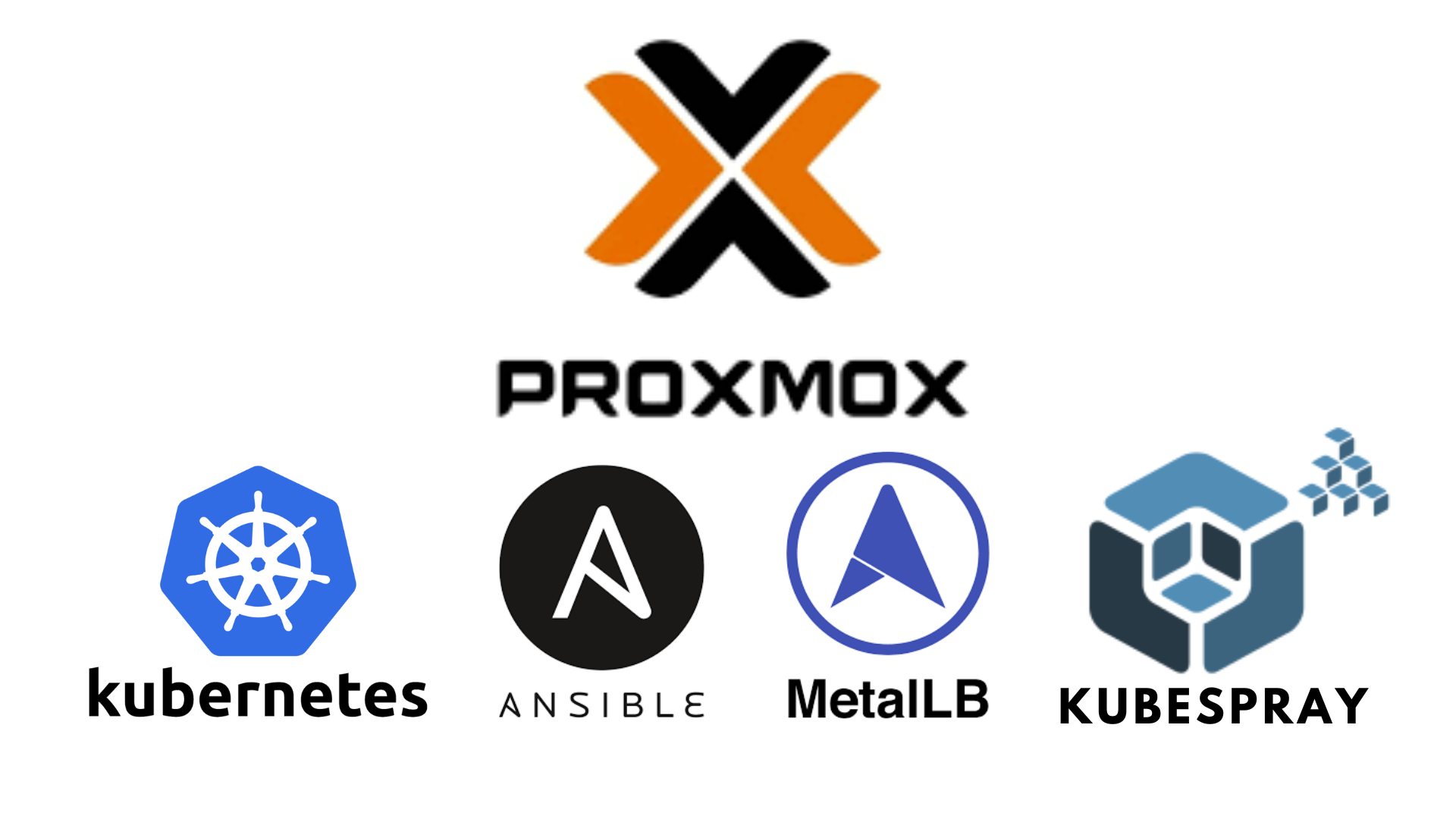Configuring Kubernetes cluster in Proxmox using Kubespray and MetalLB — Part II
Deploying High-Availabile k8s cluster on Proxmox using Kubespray and MetalLB

In my previous article, we explored setting up a Kubernetes (k8s) infrastructure in Proxmox using Pulumi and Cloud-init. In this article we look into how to configure that Kubernetes setup using Kubespray — an open-source solution for automating the deployment and management of production-ready Kubernetes clusters.
What is Kubespray?
Kubespray is a project maintained by the Kubernetes SIG team that leverages Ansible playbooks to automate and manage Kubernetes clusters. It supports a variety of configurations,
-
Container Network Interface (CNI): Calico, Flannel, Weave, and Cilium.
-
Container Runtime Interface (CRI): containerd, CRI-O, gVisor, and Kata Containers.
-
Container Storage Interface (CSI): AWS EBS, Azure Disk, and GCP Persistent Disk.
Why you need MetalLB ?
MetalLB allows you to create Kubernetes services of type LoadBalancer in a bare-metal cluster.
Prerequisite Adjustments
Since Kubespray handles most Kubernetes configuration tasks, some of the steps from my original Cloud-init setup are now redundant. And also I considered using Nix to configure Kubernetes, I found it required a steeper learning curve than I’m ready for at this stage.
Let’s begin the setup;
Clone the Kubespray Repository
Start by cloning the Kubespray repository and checking out the latest release tag, in this case, v2.26.0
git clone https://github.com/kubernetes-sigs/kubespray
git checkout tags/v2.26.0
Install Ansible
To deploy Kubespray, install Ansible in a Python virtual environment
VENVDIR=kubespray-venv
python3 -m venv $VENVDIR
source $VENVDIR/bin/activate
pip install -U -r requirements.txt
Generate Inventory
Kubespray includes a Python script to generate a host inventory file. Use it to create and tweak the necessary configurations.
pip install -U -r kubespray/contrib/inventory_builder/requirements.txt
CONFIG_FILE=inventory/proxmox/hosts.yaml python3 kubespray/contrib/inventory_builder/inventory.py \
k8s-controller-ip,192.168.1.75 \
k8s-worker1-ip,192.168.1.76 \
k8s-worker2-ip,192.168.1.204
This script generates a host configuration file.
all:
hosts:
k8s-controller1:
ansible_host: 192.168.1.76
ip: 192.168.1.76
access_ip: 192.168.1.76
k8s-controller2:
ansible_host: 192.168.1.75
ip: 192.168.1.75
access_ip: 192.168.1.75
k8s-controller3:
ansible_host: 192.168.1.204
ip: 192.168.1.204
access_ip: 192.168.1.204
k8s-worker1:
ansible_host: 192.168.1.72
ip: 192.168.1.72
access_ip: 192.168.1.72
k8s-worker2:
ansible_host: 192.168.1.73
ip: 192.168.1.73
access_ip: 192.168.1.73
k8s-worker3:
ansible_host: 192.168.1.74
ip: 192.168.1.74
access_ip: 192.168.1.74
children:
kube_control_plane:
hosts:
k8s-controller1:
k8s-controller2:
k8s-controller3:
kube_node:
hosts:
k8s-controller1:
k8s-controller2:
k8s-controller3:
k8s-worker1:
k8s-worker2:
k8s-worker3:
etcd:
hosts:
k8s-controller1:
k8s-controller2:
k8s-controller3:
k8s_cluster:
children:
kube_control_plane:
kube_node:
calico_rr:
hosts: {}
Configure Cluster Settings
Edit the cluster settings variables file to define key configurations, such as the Kubernetes version and add-ons like MetalLB.
kube_version: v1.30.0
helm_enabled: true
kube_proxy_strict_arp: true
metrics_server_enabled: true
cert_manager_enabled: true
ingress_nginx_enabled: true
metallb_enabled: true
metallb_speaker_enabled: true
metallb_config:
address_pools:
primary:
ip_range:
- 192.168.1.210-192.168.1.255
auto_assign: true
avoid_buggy_ips: true
layer2:
- primary
Deploy the Cluster
Run the Ansible playbook to deploy the cluster. Depending on your environment, this may take 20–30 minutes.
ansible-playbook -i ../inventory/proxmox/hosts.yaml -e @../inventory/proxmox/cluster.yml --user=ubuntu --become --become-user=root cluster.yml
After a successful run, verify that all nodes are joined
kubectl get nodes -o wide
Test the Cluster
Test your Kubernetes cluster by deploying an Nginx application and exposing it as a LoadBalancer service to validate MetalLB
kubectl create deployment nginx --image=nginx
kubectl expose deployment nginx --port 80 --type LoadBalancer
kubectl get svc
Access the application using the external IP address returned by the kubectl get svc command.
Originally published on Medium
🌟 🌟 🌟 The source code for this blog post can be found here 🌟🌟🌟
Reference: